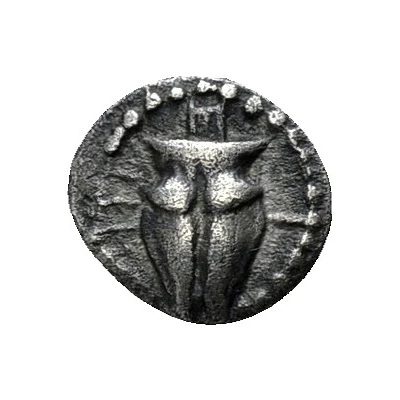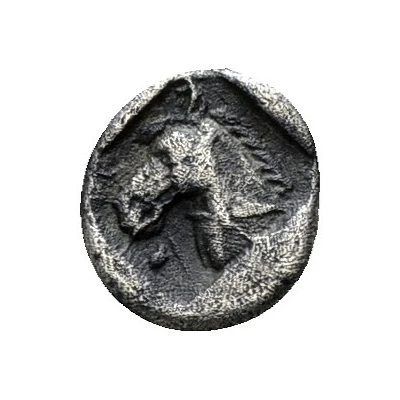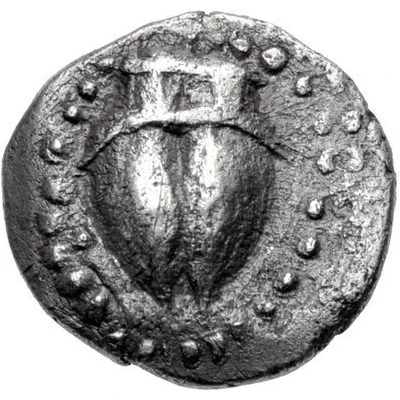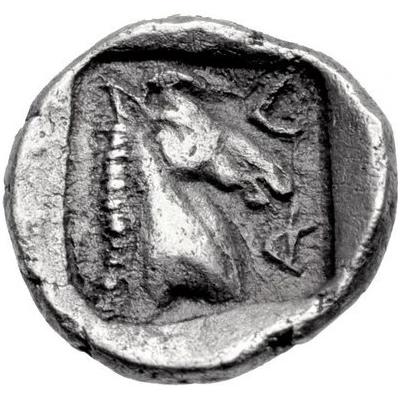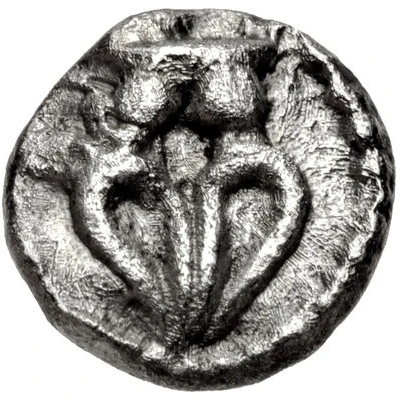
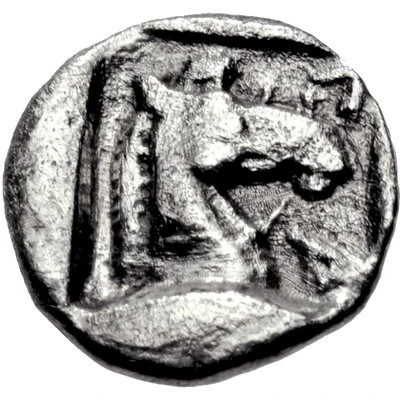

Obverse © Classical Numismatic Gallery – Reverse © Classical Numismatic Group, Inc.
Hemiobol 462 BC - 460 BC
| Silver | 0.4 g | 8 mm |
| Issuer | Larissa (Thessaly) |
|---|---|
| Type | Standard circulation coin |
| Years | 462 BC - 460 BC |
| Value | Hemiobol (1⁄12) |
| Currency | Drachm |
| Composition | Silver |
| Weight | 0.4 g |
| Diameter | 8 mm |
| Shape | Round (irregular) |
| Technique | Hammered, Incuse |
| Demonetized | Yes |
| Updated | 2024-10-10 |
| Numista | N#285463 |
|---|---|
| Rarity index | 100% |
Reverse
Head of bridled horse to right; all within incuse square.
Script: Greek
Lettering: Λ Α
Interesting fact
The Hemiobol coin was used as a form of currency in ancient Greece, specifically in the city-state of Larissa (Thessaly) during the 5th century BC. The coin's name "Hemiobol" comes from the Greek words "hēmi-" meaning "half" and "bolos" meaning "throw", which refers to the coin's value being equal to half the value of a full "bolos" coin. The Hemiobol coin was made of silver and weighed approximately 0.4 grams, making it a small but valuable denomination in ancient Greece's monetary system.
